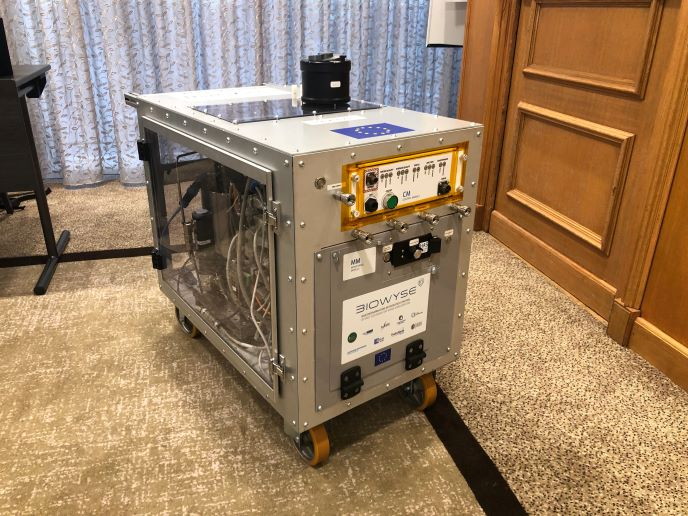Monitoring and preventing water-borne contamination in space habitats
One of the problems with current decontamination efforts for space is that monitoring and prevention are conducted as separate activities. This presents difficulties, as sending samples back to Earth for analysis and disinfection is not a viable option. The EU-funded Research and Innovation action project BIOWYSE, developed and demonstrated a compact system which combined real-time microorganism monitoring with almost instantaneous UV-based disinfection, generating no harmful by-products. The project established parameters for water quality by using data on the presence of adenosine triphosphate (ATP) molecules (which suggest the presence of microbes and thus contamination), correlated with data from other techniques. The BIOWYSE teams were the first worldwide to present scientific proof confirming UV effects on water microbiological contamination could be achieved using ATP monitoring.
The integrated system
The BIOWYSE hardware (the ‘breadboard’) demonstrated the technologies working together where water enters and is stored in the Prevention Module (a coated tank to prevent microbial build-up during temporary storage). The water then flows to the Monitoring Module, to be tested for the presence of biomass using bioluminescence (applicable to both water and surface samples). If a threshold is reached, then UV disinfection takes place in the Decontamination Module to deactivate the microbes present, down to safe drinking levels. It is then delivered to the output, such as a personal drinking bag. The Control and Service Modules keep the whole system functioning. Testing of the system lasted almost 2 years in both the lab and the field. The water samples used to test and calibrate the system ranged from sterile water, to tap water, to dirty tap water left in a tank for weeks. In the field tests, cave and river waters were also analysed. Additionally, results from VIABLE ISS(opens in new window) (where materials had remained on the ISS for months and were contrasted with Earth reference samples for microbe growth) were used to determine the optimal composition of the Prevention Module tank coating, to avoid microbial build-up. “Think of BIOWYSE as an advanced, intelligent water cooler. While culture-independent microorganism monitoring – meaning that you know something is present but not what – is not the usual space approach, its avoidance of complicated tests to identify each pathogen, coupled with almost instantaneous UV-based disinfection, makes it highly effective,” says project coordinator Emmanouil Detsis. The compact BIOWYSE assembly was designed to be installed directly into the appropriate ‘rack’ drawer on-board the ISS.
Flowing further
BIOWYSE has already resulted in a patent for the efficient sampling of humid space station surfaces, shared between consortium members Thales Alenia Space Italia(opens in new window) and a French SME, specialising in water monitoring but with no prior experience in space, GL Biocontrol(opens in new window). Additionally, the partner that designed the UV disinfection system, AquiSense Technologies(opens in new window), has gone from having no space sector customers to being the prominent supplier in the space sector for UV lamps – producing UV LEDs which surpass any previous commercial uses of small UV LED water reactors. BIOWYSE has always had the needs of future space habitats in mind, as missions to the Moon or Mars will need to be highly independent of Earth, and water might have to be stored pending the arrival of crews. “The main focus now is building a system that can be flown to the station. Therefore, we are looking for flight opportunities with the European Space Agency and national agencies,” says Detsis.







